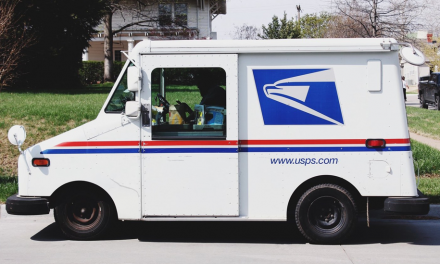
Donahoe stresses need to build on USPS physical delivery strengths
US Postmaster General Patrick Donahoe said today that the mailing industry had to “embrace change” to strive for a more dynamic future, but that USPS would build on its key strength – its delivery network. As the US mailing industry gathered in Orlando, Florida, for this year’s National Postal Forum, Donahoe said technology had to be used as a transformative power to respond to the “astonishing” changes in modern communications.
But the 73rd US Postmaster General said the Postal Service had to start with its core strength, as a national delivery “platform” providing growth opportunities for America’s businesses.
“Where we start is with the idea of delivery,” he said. “That’s the core function of the Postal Service. We deliver what you create. And if we can expand our delivery platform beyond what it is today, we can provide you with even greater opportunities.”
Donahoe was speaking a little over a month before a self-imposed moratorium on closing hundreds of mail processing facilities and post offices comes to an end. USPS is looking to cut more than $2bn a year in operating costs from its processing network, but also has plans to restructure its delivery operations to save another $3bn a year.
Innovations
This year’s four-day National Postal Forum has seen USPS showing off some of its latest innovations like Go Post, the trial of 24-hour self-service parcel terminals it has been running since the end of 2011 in Northern Virginia.
It has also been discussing new ideas like the use of company logos, trademarks, brand images or other marketing designs within the permit indicia area of mailpieces to help companies use the mail to promote themselves.
And, increasingly smart uses of data and the progression of the latest generation of barcode tracking technology at USPS, Intelligent Mail barcodes, is also key discussion points at the Forum.
In his keynote speech to the Forum today, Donahoe emphasised the importance of innovation and technology, including better use of data to increase the value of mail to senders and receivers.
“We have to look at potential changes in technology and think about how to use those technologies to enhance the positive characteristics of mail,” he said. “We have to take the best attributes of the Postal Service and bring it into the future.”
This year’s Forum is taking place while US lawmakers prepare for important debates on key postal reform proposals in Congress, and this has included calls for a rethink on the business model at USPS to help counter its spiraling debt and multi-billion dollar annual losses.
Donahoe said today: “We have left nothing off the table in terms of rethinking how we perform our core function of delivering. The best way forward is to embrace the potential of change.”
Future direction
In shaping up proposals within both the US House of Representatives and the US Senate, Congressmen have talked about freeing up USPS to provide a greater range of services to raise revenues, such as allowing the Postal Service to deliver alcoholic beverages, something currently banned.
Ahead of the Forum, the US Postal Service chief marketing officer Paul Vogel spoke to Post&Parcel about the future direction of USPS and about proposals from Congress about broadening the USPS product portfolio.
He said he believed the real importance was still in building the “tremendous value” that exists in the core products within the Postal Service, and that much could still be achieved to increase revenues without Congressional action.
“For the foreseeable future, there will be mail and shipping, and as time goes on there may be movement away from mail, but right now we are out there delivering people’s messages,” he said.
“What we need from Congress may be some help in determining what the American people might want with their Postal Service. But this is about evolution – clearly, we’re in a physical world today.”
Vogel suggested that looking ahead, the Postal Service was more likely to look at some form of hybrid mail than a purely digital communications service, since “we don’t need Congress for hybrid mail, since we would be physically delivering mail.”













Any comments about competing with “targeted direct mail” programs? Why compete with those that are funding the USPS with a product that “blasts” an area like EDDM does? It appears that in advertising to the public (via TV), the USPS is digging deeper into the revenue stream we provide (targeted direct mail).